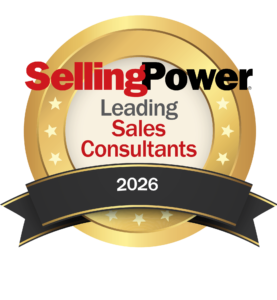Trigger Event Strategies That Lead to Top Performance
Craig Elias, author of SHiFT!: Harness the Trigger Events That Turn Prospects into Customers defines trigger events and explains how to leverage them to drive more sales.
Selling Power (SP): What, exactly, is a trigger event?
Craig Elias (CE): Trigger events are the silver bullets in sales, because they allow you to get in front of the right person at exactly the right time. There are three types of trigger events: executive changes, new funding, and product launches. Each trigger signals a high probability that the company will eventually purchase new goods and services.
SP: How does a change in executive staffing create a sales opportunity?
CE: Executives are typically hired to make a difference. Since executive tenure tends to be short, they want to make their mark fast. They therefore need to buy solutions and services in order to make that happen. That opens an opportunity to sell, because it is easier for the new management to change suppliers because they can say that a previous poor choice was someone else’s decision.
SP: How about a change in funding?
CE: Studies have shown that companies with new funding are up to eight times more likely to buy many services than comparable companies that haven’t had a similar funding event. Funding is meant to drive growth, which means purchasing new solutions and services to help with sales, marketing, product development, operations, and so forth. Many times companies and organizations actually struggle to spend new money quickly in order to show that they’re doing everything possible to become successful.
SP: And product launches?
CE: New products create demand for supporting products and services that can fuel sales growth for the new product. The launch of a new product requires companies to purchase marketing services, sales training, e-commerce, and so forth. Also, new products often spawn the departure of personnel and other changes as people move on to newer projects. Product launches therefore create secondary trigger events, such as new funding and executive departures.
SP: Does a merger qualify as a trigger event?
CE: Corporate acquisitions, by their very nature, involve changes in executive roles, which often ripple throughout the entire organization. They also involve changes in funding, with some groups doing better under the new regime and some doing worse. Like any other major organizational change, a merger creates multiple trigger events, each of which can be leveraged into a sales opportunity.
SP: How do you take advantage of a trigger event?
CE: A trigger event tends to create what I call a window of dissatisfaction. This is when a company realizes that it has a problem but takes no specific action because it’s busy solving other problems. Later, corporate attention will move toward fixing the problem, at which point that window closes and the company starts looking for alternatives to solve the problem. From the perspective of a sales professional, the best point to become involved is when the window of dissatisfaction is open, because it allows you to guide the prospect toward the solution that you have to offer without having to overcome preconceived notions of how the problem should be solved.
SP: Can you give an example?
CE: Sure. When I was a salesperson and needed to break into a multimillion-dollar account, I would find out who my biggest competitor was in each account and then find out the name of the salesperson who managed that account for the competitor. I would then wait for either that salesperson to leave the account or that salesperson’s primary contact to leave the company. The moment either of those events happened, I’d step up my sales efforts, because I knew that the competitor’s hold on the account would be weakened.
SP: Can technology help sales teams identify trigger events?
CE: Absolutely. You can use something as simple as Google Alerts to search for product launches or LinkedIn to follow changes in executive staffing. My favorite Sales 2.0 application for this purpose is iSell, from the software vendor OneSource. It provides situational relevance. Not only does the application inform you of the trigger event, but it also provides context, such as whether you’ve sold to this company in the past and additional information about the industry, the prospect’s competitors, and so forth. The application provides you with enough information to have a relevant conversation the first time you talk to the prospect, in response to the trigger.
Get our Enewsletter
Get the latest sales leadership insight, strategies, and best practices delivered weekly to your inbox.
Sign up NOW →